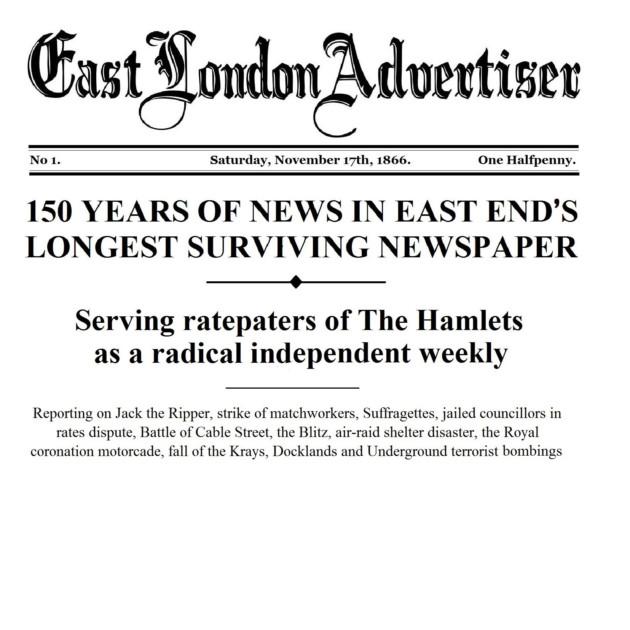The East London Advertiser continues its nightly look at some of the news we have covered since November, 1866, as part of our distinguished 150th anniversary this month, like one of our earliest stories about Thomas Barnardo’s rescue of the street urchins of Whitechapel...
![East London Advertiser: Thomas Barnardo [photo: Ragged Museum, Martin Levy book] East London Advertiser: Thomas Barnardo [photo: Ragged Museum, Martin Levy book]](/resources/images/14928945.jpg?type=mds-article-575)
1867: Destitute children are taken off the streets by Thomas Barnardo, a 22-year-old medical student at the London Hospital who is appalled at the East End’s poverty, where children are living on the streets of the capital at the heart of the world’s biggest empire. Many he sees die of hunger.
Barnardo joins the Ernest Street Ragged School, where he flourishes as a teacher and is soon promoted to superintendent.
But his passion to help more children soon gets him into trouble when he publishes an article describing the difficulties of teaching large numbers in a small classroom, bringing him into conflict with the Ragged Schools Union trustees.
Barnardo resigns and set up his own trust, securing two properties in Hope Place in 1868 where he begins the work of the East End Juvenile Mission to educate children during the day and adults in the evening. All are provided with a hot meal.

His own Ragged School is set up as the Copperfield Road Mission in a wharf on the Regent’s Canal at Mile End in 1877.
The first batch of 320 “waifs and strays” are sent to live with rural villagers for the fresh air and countryside, to help them escape from polluted, overcrowded urban slums.
A third of the first 457 boys who enter Barnardo’s have rickets, 21 have ringworm and most have rotten teeth, but show marked health improvement and development at school once they move into foster care.
By 1889, a quarter of all fostered children are girls, many having been at risk of sexual exploitation—or as it is then known “moral danger”.

Thomas Barnardo has put 4,000 children in foster care by the time he dies in 1905.
By 1908, the Government has set up enough free schools to meet the population needs.
The Copperfield Road school finally closes and later reverts back to a warehouse. It is converted again in the 1990s—this time into a museum in the 1990s to tell the story of Thomas Barnardo and the Ragged School system.





Comments: Our rules
We want our comments to be a lively and valuable part of our community - a place where readers can debate and engage with the most important local issues. The ability to comment on our stories is a privilege, not a right, however, and that privilege may be withdrawn if it is abused or misused.
Please report any comments that break our rules.
Read the rules here